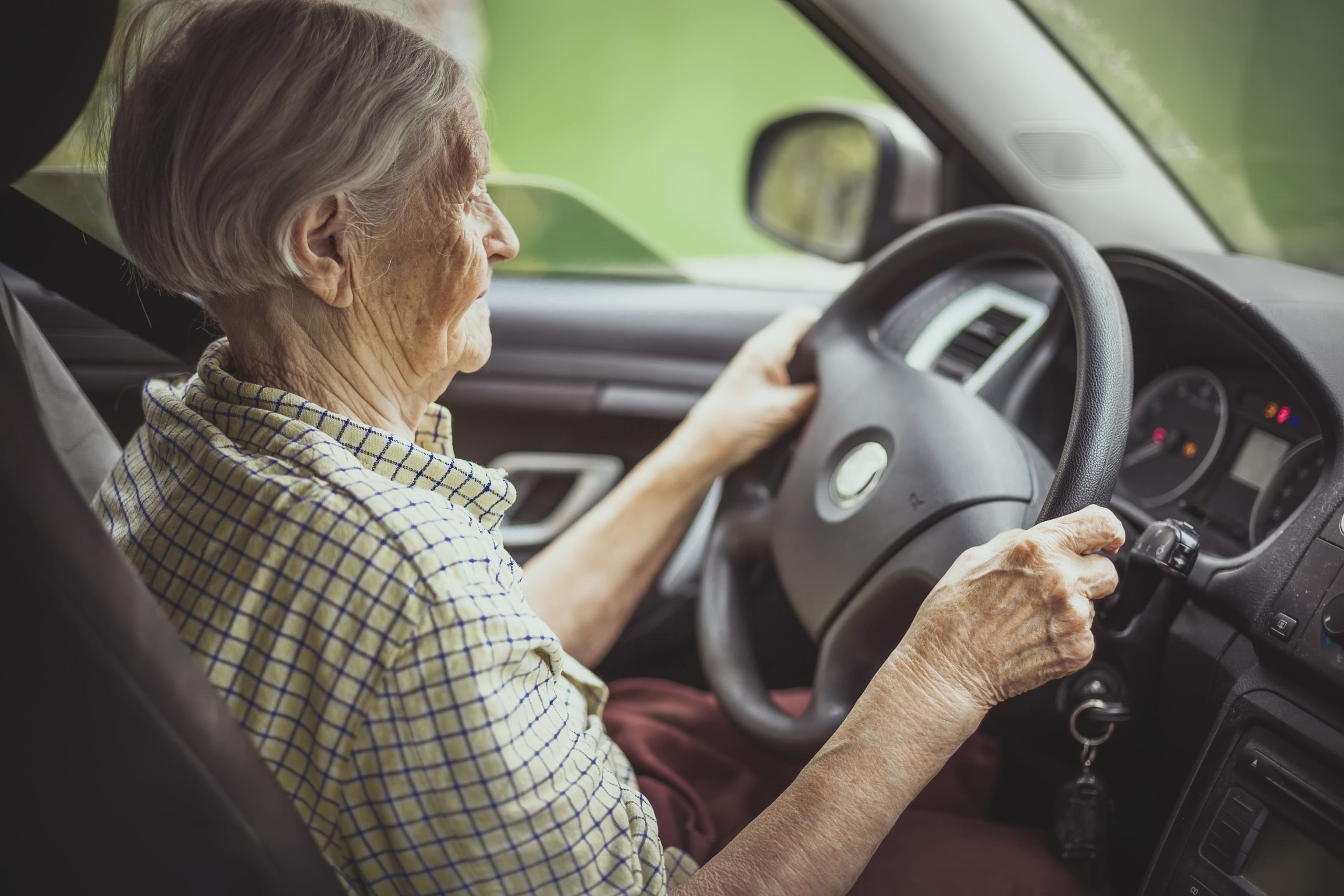Whether you have to answer this question for yourself or for a loved one, it’s no less difficult to approach. As we get older, it seems that life takes more away from us than it gives—well, “seems” is not entirely accurate. It does take more away. Perhaps the most difficult to embrace is the loss of independence after a lifetime of self-reliance. For many older drivers, driving not only signifies independence but can also be a source of personal pride. As such, the idea of giving up driving can be an emotionally charged subject.
No one wants to be a burden to their family, but we have to remember that at one time in our lives, the burden of family was something that we chose to carry, and turnabout is fair play. Of course, not all of us have family and must remain self-reliant for as long as nature will allow. For such people, there are home care providers who can lighten the load, as well as other options, which we’ll discuss later on. We’ll also talk about some practical means to evaluate when the time to “have the talk” has arrived, or if you’re on your own, exercise pragmatic self-awareness and discipline.
If you have to broach the subject of giving up driving with a loved one, it’s best not to approach it from a standpoint of admonishment or “taking away,” but rather one of offering help. People are contrarians by nature, which means a head-on attack, such as “you’re not safe,” or an ultimatum will only be met with opposition. It’s best to approach it from the standpoint of being at risk as part of an ongoing discussion. Also, the role reversal of parent and child doesn’t sit well with someone who’s used to giving you orders and must be handled diplomatically. If you can, have your family’s doctor broach the subject. Health care professionals should accept responsibility for bringing up the subject.
Before we dive into the question of when to give up driving, let’s look at some facts. According to the Insurance Institute for Highway Safety, older drivers are keeping their licenses longer and logging more miles on their cars than in the past. According to studies, seniors are actually safer drivers than young ones, since they are more inclined to wear seatbelts, obey the speed limit, not drink while driving and don’t succumb to testosterone-fueled “competitive” driving.
Most older drivers recognize their limitations and avoid situations that put them at risk. Seniors drive less after dark, during rush hour, in bad weather, and avoid difficult roads such as highways and intersections. Despite that, fatal crash rates do tend to increase considerably after age 70 and reach their peak among drivers 85 and older. With the exception of teen drivers, seniors have the highest crash death rate per mile driven, even though they drive fewer miles than younger people.
How do you react to this?
While Americans are living longer healthier lives, there is a progressive decrease in reaction time from age 20 to 80. Normal aging is associated with decreased reaction time, vision problems, and hearing decline, all of which put you and other drivers at greater risk.
Due to age-related vulnerabilities, seniors are more susceptible to injury with prolonged recovery, and in the worst-case scenario, fatality. Certain medical conditions, such as arthritis, cardiovascular disease, dementia, glaucoma, macular degeneration, Parkinson’s disease, and stroke compromise driving abilities. The formula is simple: the more medications you take and the more medical conditions you have, the more driving risks increase.
Back to school
Our average response time is anywhere from 0.7 seconds to 1.5 seconds. A car travels at 1.467 feet per second. If you multiply that by your speed at say, 25 miles per hour, your car will travel 36.67 feet before you hit the brake pedal. Some breaking systems don’t even engage for another half-second after that, which adds another 18.33 feet before any slowing occurs. Therefore, even in your prime, at 25MPH, a car will travel 55 feet from the time you see trouble to your breaks engaging. At 60MPH, your car travels 132 feet from perception to the time it takes to touch the brake pedal. It follows that the longer it takes to react, the longer your car is an unrelenting 2+ ton projectile.
This is something we’re all taught when we take driver’s education in high school, yet we drive as though we’re ensconced in a protective cocoon that makes us completely invulnerable—until you hear that sickening crunch of metal and glass. Life is hard enough for seniors without adding insurance agents, deductibles, police, car repairs, injuries, or worse. The ultimate question is whether the increasing possibility of all of that is worth the illusion of independence.
Now let’s take steps to ensure that you or your loved one doesn’t become one of those unfortunate statistics. Here are some ways to make sure you, your parent, partner, or spouse is still fit to drive or if it’s time to hand over the keys.
Observe as a passenger
Medical issues aren’t the only reasons to worry about driving abilities. If you have concerns about an older adult’s driving, run an errand with the driver so you can really gauge response time and your general confidence in your loved one’s proficiency.
Warning signs of impaired driving
Here is a list of driving behaviors that suggest an older family member should have second thoughts about driving:
• Consistently driving too slow or too fast
• Getting lost on familiar roads
• Recent car accidents or near misses
• Trouble parking or making left turns
• Receiving tickets for driving violations
• Running red lights or stop signs
• Showing up with new dents or scratches on the car
• Using lanes improperly
The deciding factor
Put simply, perhaps the most telling is whether or not grandchildren are allowed in the car when the older adult is driving.
How to get the ball rolling and the tires to stop
Encourage older loved ones to take a self-assessment questionnaire from the National Highway Traffic Safety Administration to see if any potentially problematic symptoms could affect their driving abilities. AARP also offers both classroom and online safety courses for older drivers; passing the course could lower your auto insurance premium.
Another option you can suggest is to have an older adult driving evaluation. These are often available at hospitals and administered by occupational therapists or driving rehab specialists. If a senior is reluctant to be evaluated, you can assure them that they do not affect licensure.
Additionally, the evaluation may point out isolated areas where a driver is not safe. For example, they may be fine during the day but not at night or in areas unknown to them. This can help your loved one to realize that it makes sense to put some restrictions on driving rather than putting an end to it altogether.
In some instances, a specialist can suggest vehicle adaptations that make it safer for the person to continue driving.
Non-drivers have more options these days
If it does come to giving up driving for your or a loved one, dealing with loss in many cases is about an attitude of mind, which in turn can offer practical solutions. It’s ironic that people consider the loss of driving as a loss of independence, yet for many of us, the American dream is a chauffeur and having people bring us things, like a superstar. These days, with supermarkets such as Ralphs providing online shopping and one-hour delivery service, as well as driving services such as Uber and Lyft, you can take care of essentials and still have mobility without the risk of driving with slower reflexes or impaired judgment.
When you break it down, it’s a simple matter of calculating expenses. If you’re living on a fixed income, the formula is simple: Is the ability to get in the car when you feel like it as opposed to a little planning ahead worth the expense of having a car? And with the aforementioned services, along with those provided by New Wave Home Care, the royal treatment is just a phone call away.







